The sequence-structure-function relationship of intrinsic ERα disorder
- PMID: 39779860
- PMCID: PMC11864982
- DOI: 10.1038/s41586-024-08400-1
The sequence-structure-function relationship of intrinsic ERα disorder
Abstract
The oestrogen receptor (ER or ERα), a nuclear hormone receptor that drives most breast cancer1, is commonly activated by phosphorylation at serine 118 within its intrinsically disordered N-terminal transactivation domain2,3. Although this modification enables oestrogen-independent ER function, its mechanism has remained unclear despite ongoing clinical trials of kinase inhibitors targeting this region4-6. By integration of small-angle X-ray scattering and nuclear magnetic resonance spectroscopy with functional studies, we show that serine 118 phosphorylation triggers an unexpected expansion of the disordered domain and disrupts specific hydrophobic clustering between two aromatic-rich regions. Mutations mimicking this disruption rescue ER transcriptional activity, target-gene expression and cell growth impaired by a phosphorylation-deficient S118A mutation. These findings, driven by hydrophobic interactions, extend beyond electrostatic models and provide mechanistic insights into intrinsically disordered proteins7, with implications for other nuclear receptors8. This fundamental sequence-structure-function relationship advances our understanding of intrinsic ER disorder, crucial for developing targeted breast cancer therapeutics.
© 2025. The Author(s).
Conflict of interest statement
Competing interests: The authors declare no competing interests.
Figures





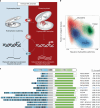
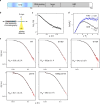



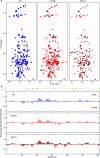
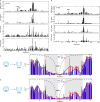

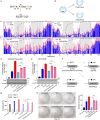

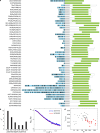
Similar articles
-
A Metastable Contact and Structural Disorder in the Estrogen Receptor Transactivation Domain.Structure. 2019 Feb 5;27(2):229-240.e4. doi: 10.1016/j.str.2018.10.026. Epub 2018 Dec 20. Structure. 2019. PMID: 30581045 Free PMC article.
-
Serine 28 phosphorylation of NRIF3 confers its co-activator function for estrogen receptor-alpha transactivation.Oncogene. 2008 Sep 4;27(39):5233-42. doi: 10.1038/onc.2008.151. Epub 2008 Jun 2. Oncogene. 2008. PMID: 18521086 Free PMC article.
-
Stable inhibition of specific estrogen receptor α (ERα) phosphorylation confers increased growth, migration/invasion, and disruption of estradiol signaling in MCF-7 breast cancer cells.Endocrinology. 2012 Sep;153(9):4144-59. doi: 10.1210/en.2011-2001. Epub 2012 Jun 25. Endocrinology. 2012. PMID: 22733972 Free PMC article.
-
Estrogen receptor alpha phosphorylation and its functional impact in human breast cancer.Mol Cell Endocrinol. 2015 Dec 15;418 Pt 3:264-72. doi: 10.1016/j.mce.2015.01.016. Epub 2015 Jan 15. Mol Cell Endocrinol. 2015. PMID: 25597633 Review.
-
A Closer Look at Estrogen Receptor Mutations in Breast Cancer and Their Implications for Estrogen and Antiestrogen Responses.Int J Mol Sci. 2021 Jan 13;22(2):756. doi: 10.3390/ijms22020756. Int J Mol Sci. 2021. PMID: 33451133 Free PMC article. Review.
Cited by
-
Decoding estrogen receptor and GPER biology: structural insights and therapeutic advances in ERα-positive breast cancer.Front Oncol. 2025 Jun 26;15:1513225. doi: 10.3389/fonc.2025.1513225. eCollection 2025. Front Oncol. 2025. PMID: 40641933 Free PMC article. Review.
-
ESRP1 drives subtype-specific breast cancer progression through ER-regulated transcriptional programs and EMT-related splicing switch.Am J Cancer Res. 2025 Jun 25;15(6):2807-2825. doi: 10.62347/OXPE5390. eCollection 2025. Am J Cancer Res. 2025. PMID: 40667548 Free PMC article.
-
Structural and Functional Relevance of Charge-Based Transient Interactions inside Intrinsically Disordered Proteins.ACS Phys Chem Au. 2025 Apr 15;5(4):356-366. doi: 10.1021/acsphyschemau.5c00005. eCollection 2025 Jul 23. ACS Phys Chem Au. 2025. PMID: 40727229 Free PMC article.
-
The Ensemble Basis of Allostery and Function: Insights from Models of Local Unfolding.J Mol Biol. 2025 Jun 9:169287. doi: 10.1016/j.jmb.2025.169287. Online ahead of print. J Mol Biol. 2025. PMID: 40499749 Review.
References
-
- Ali, S. & Coombes, R. C. Endocrine-responsive breast cancer and strategies for combating resistance. Nat. Rev. Cancer2, 101–112 (2002). - PubMed
-
- Kato, S. et al. Activation of the estrogen receptor through phosphorylation by mitogen-activated protein kinase. Science270, 1491–1494 (1995). - PubMed
-
- Chen, D. et al. Activation of estrogen receptor alpha by S118 phosphorylation involves a ligand-dependent interaction with TFIIH and participation of CDK7. Mol. Cell6, 127–137 (2000). - PubMed
MeSH terms
Substances
Grants and funding
LinkOut - more resources
Full Text Sources
Medical
Miscellaneous

